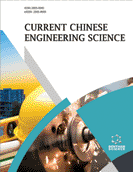Abstract
At present, the requirement for new product development and upgrading of the existing product have become inevitable in the manufacturing scenario. The manufacturing sectors are striving hard to sustain in the global market, hence they are continuously seeking rapid manufacturing technologies for developing new products as there is a demand for innovative designs with enhanced features. Conventional manufacturing technologies have certain shortcomings, such as long production times, and are inherent to material wastage due to the subtractive nature of the processes. To meet the demand, it is necessary to accelerate the product development process. The time spent on the design, manufacturing and testing of a product has to be shortened. To emphasize the part representation (or) to rapidly create a system, the prototyping part is ‘Rapid Prototyping’ (RP), and the technology is ‘Additive Manufacturing’ (AM); it is also popularly known as ‘3D Printing’. AM is a novel manufacturing technology as the products are fabricated by adding successive layers of material with the aid of a computer. A Computer Aided Design (CAD) model is created and exported as a Standard Triangle Language (STL) file that is readable by an AM machine. There are many techniques available, which can be categorized according to their raw material. This chapter comprehensively reviews the AM techniques, the applications and the various materials used to produce the AM component.
Keywords: 3D printing, Additive manufacturing, Ceramics, Computer-aided design, Direct energy deposition, Functionally graded materials, Fused deposition modeling, Laminated object manufacturing, Manufacturing, Metals and alloys, Nanocomposites, New product, Polymers, Powder bed fusion, Rapid manufacturing, Rapid prototyping, Selective laser sintering, Solid state sintering, Stereolithography, Sustainability.






















